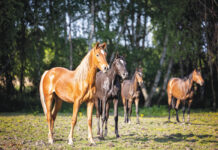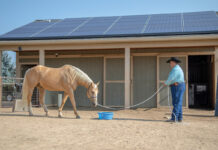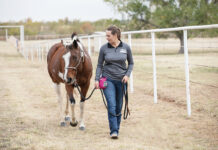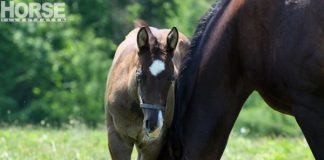Horses crave structure, consistency, praise and even discipline. In a herd setting, horses feel safe when they know that there’s an order and established rules. They know what to expect and where they stand within the hierarchy of the herd. When it comes to your herd (a herd of two: you and your horse), you must teach your horse what behaviors will and won’t be tolerated. It’s your job to teach your horse the best manners from the start. It’s also your job to discipline your horse when needed. Read on to learn more about bad horse behavior.
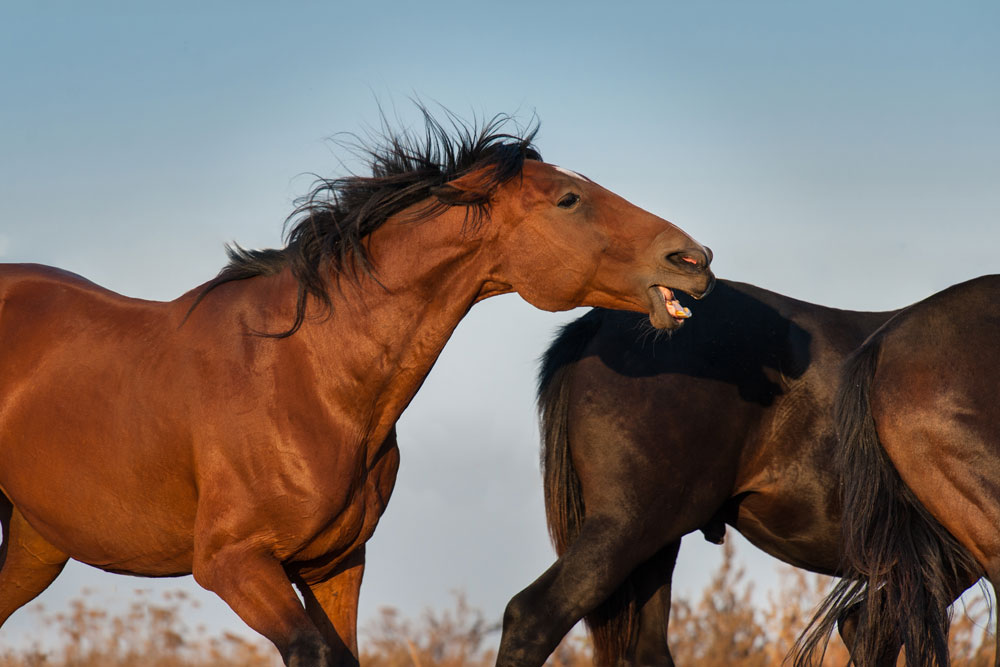
Both behaviors can be thwarted if you understand how to discipline your horse correctly. If you notice the early warning signs of biting, you will help avoid future danger. Keep in mind that discipline doesn’t mean being a bully or dishing out undue punishment. It does mean you must teach and enforce the rules.
For this to work, you must keenly observe your horse and work with him regularly. When you spend time doing purposeful groundwork and studying horse behavior, you’ll find that your horse will need very little correction.
Being in the Herd
Horses use behaviors such as biting and pawing to tell the rest of the herd what they think. Though we humans may deem these behaviors as poor and discipline-worthy, they have their place in the herd.
Biting is a way for horses to show aggression and to correct another horse for getting too close or for breaking a rule. Pawing is a gesture horses use to communicate that they are frustrated and want to be moving.
When your horse finds a true leader in you, he’ll do his best for you. Horses respect their leader and want to stay in the good graces of the one in charge.
I recommend round pen and lead line work to teach your horse your signals and rules and to help ensure that he’s willing to follow your requests.
All horses must learn that they can’t act out impulsively with their herd behaviors when there are humans present. Here’s how to establish your leadership and show your horse what behaviors you want to see when it comes to biting and pawing.
How to Stop Your Horse from Biting
Your horse will bite if he’s feeling dominant, aggressive or irritated. Biting is a dangerous habit that is progressive and must be stopped immediately. A horse that bites was most likely allowed to lip, then nip, before advancing to the worst and most dangerous behavior, biting. The best fix is preventing the behavior from ever escalating to a full bite.
- Keep a respectful distance between you and your horse. Your horse doesn’t want you to hold his head or mouth or to get in his space. That isn’t how horses communicate. Don’t crowd his head or rub his mouth or nose.
- Don’t allow your horse to put his nose toward you. If he moves his head into your space, correct him by poking him with one straightened finger or tug on the lead rope to move his head back to center.
- Does your horse lip or nip? Avoid feeding treats by hand. Giving food by hand shows that you are not the leader (dominant horses do not give food away). It also teaches your horse that he may touch you with his mouth and move into your space.
- If your horse bites, don’t escalate his agitation and aggression by hitting. Instead, reprimand him verbally and move him aggressively out of your space. Be careful not to get close enough to be kicked, struck or bit.
A horse that shows this aggression does not see you as the leader and needs consistent groundwork to re-establish the roles in your herd. Work consistently and study your body language and moves to make sure that you are showing that you’re in charge and not subordinate.
Bad Horse Behavior: Pawing Problem Solver
Your horse paws when he wants your attention or when he’s frustrated and ready to move. Some horses believe that they can request food or a treat when they paw. Be careful to only provide food or treats (in a bucket, not by hand) when your horse is standing calmly.
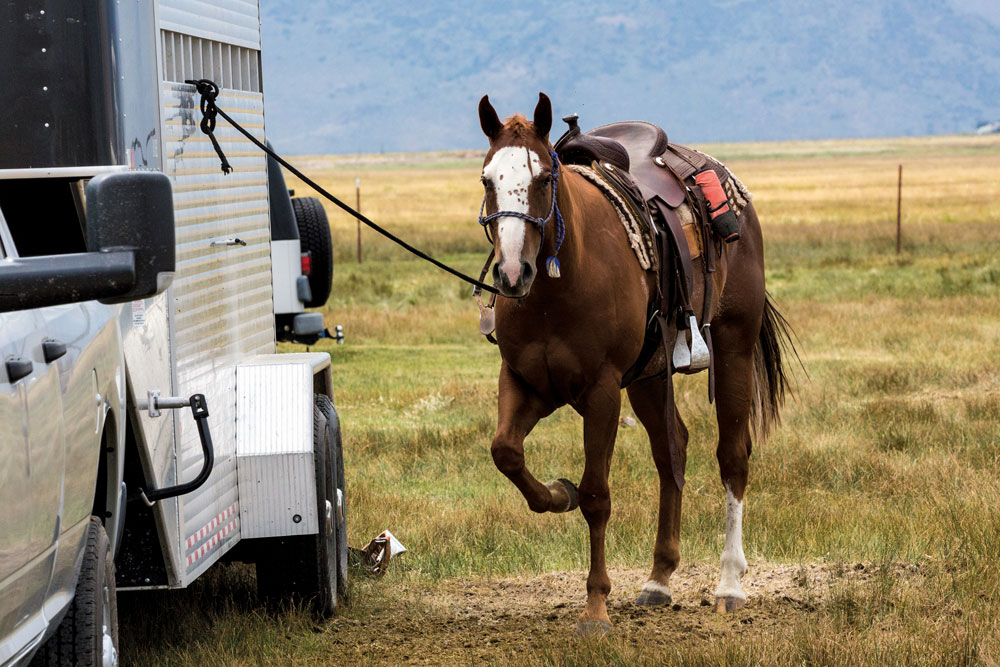
Horses may paw when standing tied. They want your attention and will act out by pawing to get any attention they can. Don’t reward your horse with attention if he paws.
- Don’t yell at him from across the barnyard or come to him; instead, ignore the behavior. A horse that is bored will keep pawing to get your attention. Allow him the time to learn that pawing gets him nothing and he will exert too much energy, so he’s better off standing still.
- Tying horses at a “patience post” is a common component of horse training. Young or ill-mannered horses learn quickly when tied to a hitching rail daily.
At first, horses may paw and carry on, but they’ll learn that their antics don’t bring positive results. They’ll learn to stand tied patiently in a week or two. Using rubber mats at the hitching rail will help prevent a horse from digging a big hole when he paws. Apply fly spray and use a shady spot during cooler parts of the day when teaching your horse to stand tied so that he’s physically comfortable.
A horse that paws will also benefit from more groundwork. Your horse should know that he is to stand still on command. He shouldn’t move around when you groom him or paw when he wants to move on to a new activity.
You’re the leader, you’ve set the expectations, and you must follow through with correction or praise as needed. When you work consistently with your horse and rule out the early signs of disobedience, you’ll have a willing horse that is obedient and disciplined.
This article originally appeared in the November 2018 issue of Horse Illustrated magazine. Click here to subscribe!

